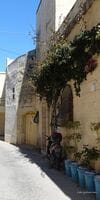Mosta (Maltese name: Il-Mosta) is a city on the island of Malta, which is densely populated and, by local standards, one of the largest in Malta.
The city of Mosta is located in the center of the island and has no access to the sea.
The city is characterized by historical buildings in the so-called old Mosta, and new buildings on the outskirts.
The development of the city is quite dense; along the streets there are historical buildings with characteristic Maltese facades and colorful balconies, and modern buildings, some of which contain a few shops, cafes, restaurants and accommodation facilities (hotels, apartments)
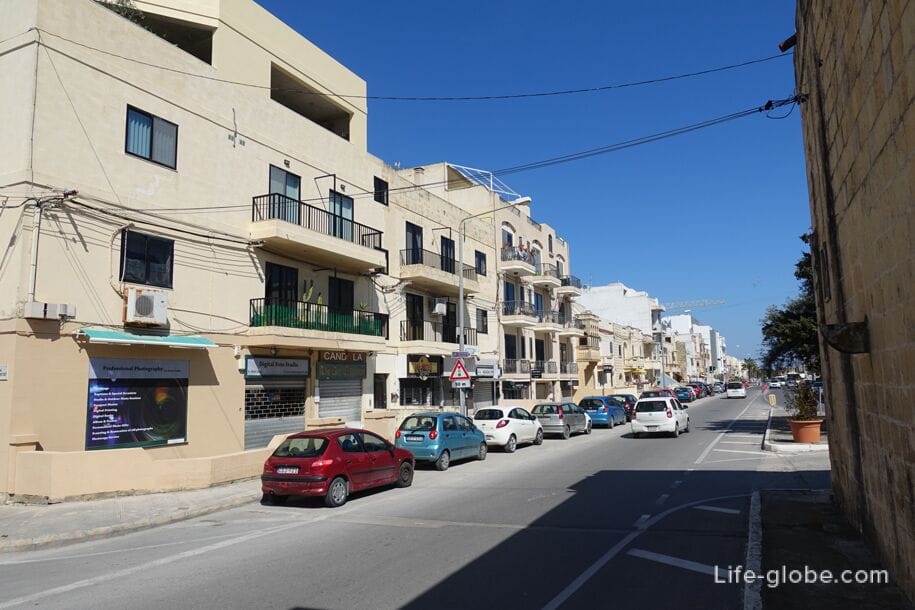
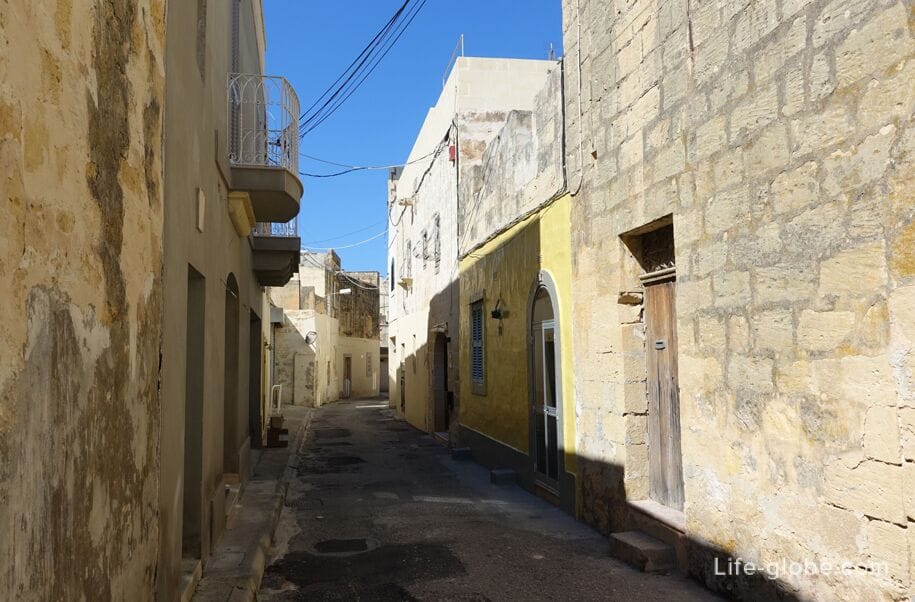
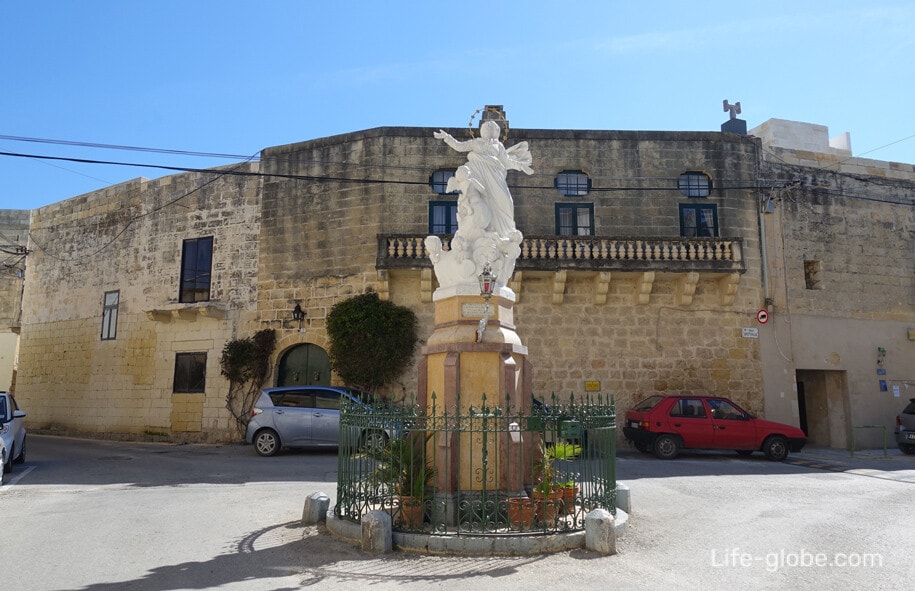


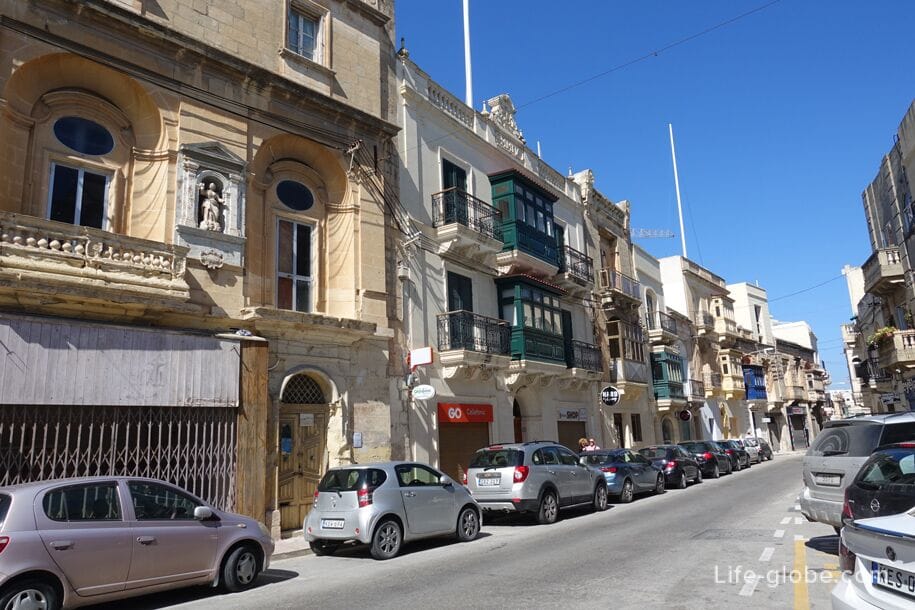
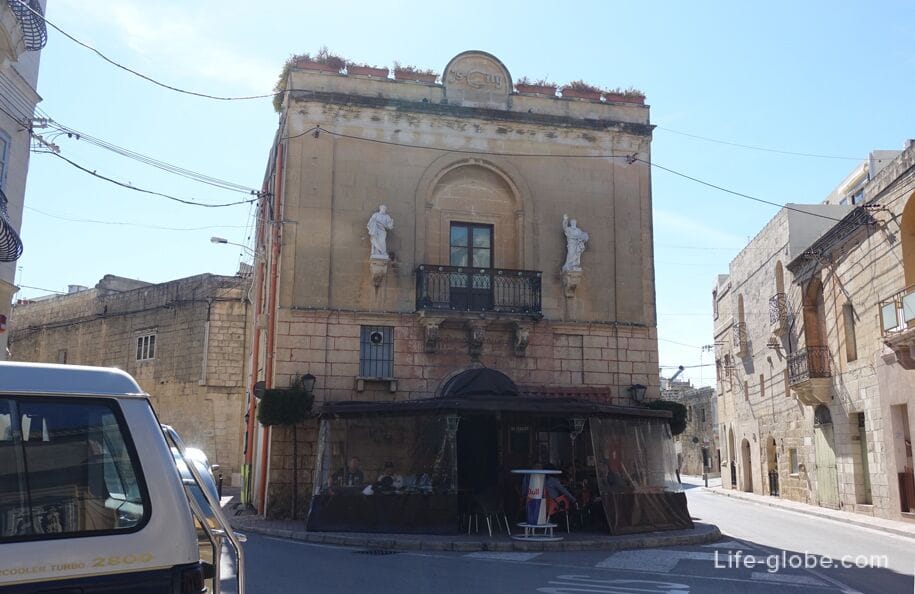
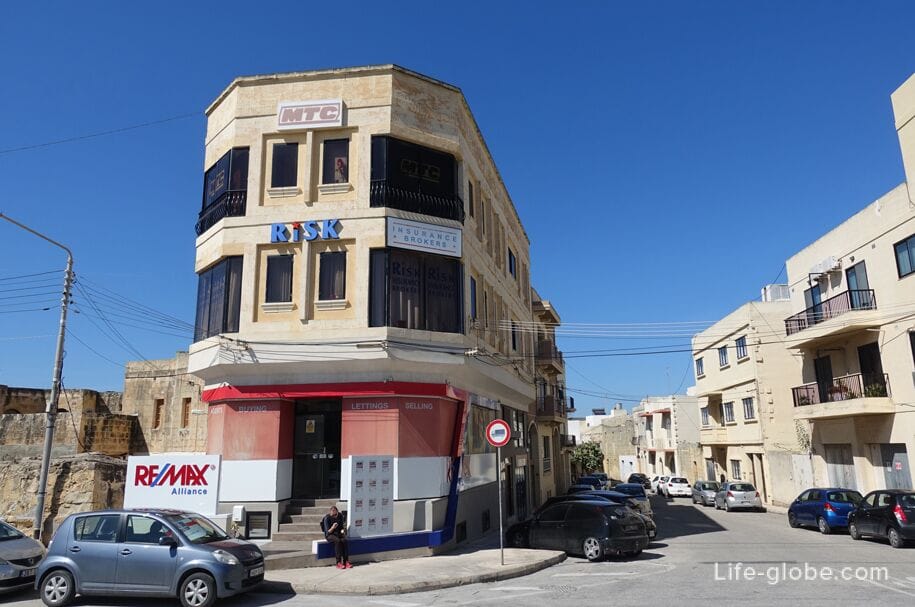
The main attraction of Mosta, thanks to which the city is visited annually by numerous tourists, is the basilica of the Mosta Rotunda (Maltese name: Ir-Rotunda tal-Mosta).
The Rotunda Mosta is the largest and most famous church in Malta, and has one of the largest unsupported domes in the world (37 meters in diameter).
This is a functioning basilica - services are held in it.
Within the walls of the basilica there is a museum of a bomb that hit the church and did not explode during World War II.
In the church, you can climb under the dome and go out to the outdoor terrace, which offers panoramic views, as well as visit the museumified underground shelter from the Second World War. More about the basilica, the museum, the observation deck and the shelter...
On the square near the basilica, a statue of a lion is placed on a pedestal. Once it was part of the fountain, which was originally located in Slima. The statue is made of bronze-colored cast iron and was made at a foundry in Paris. The coat of arms of Mosta and independent Malta are engraved on the pedestal.
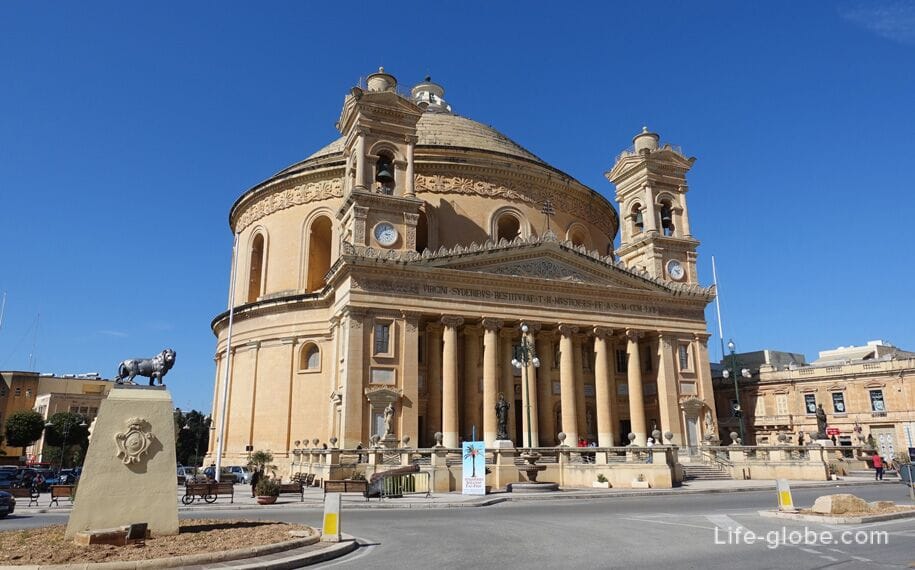
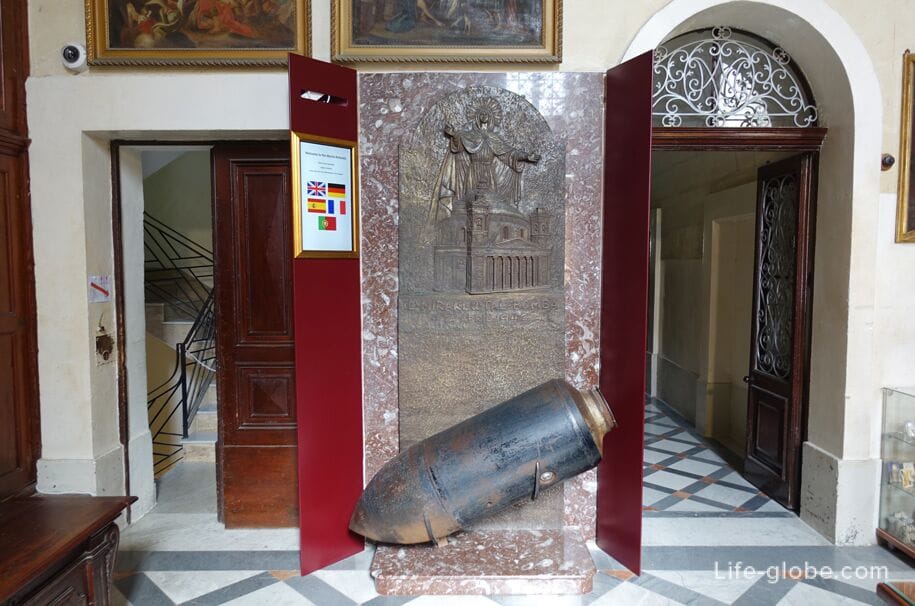
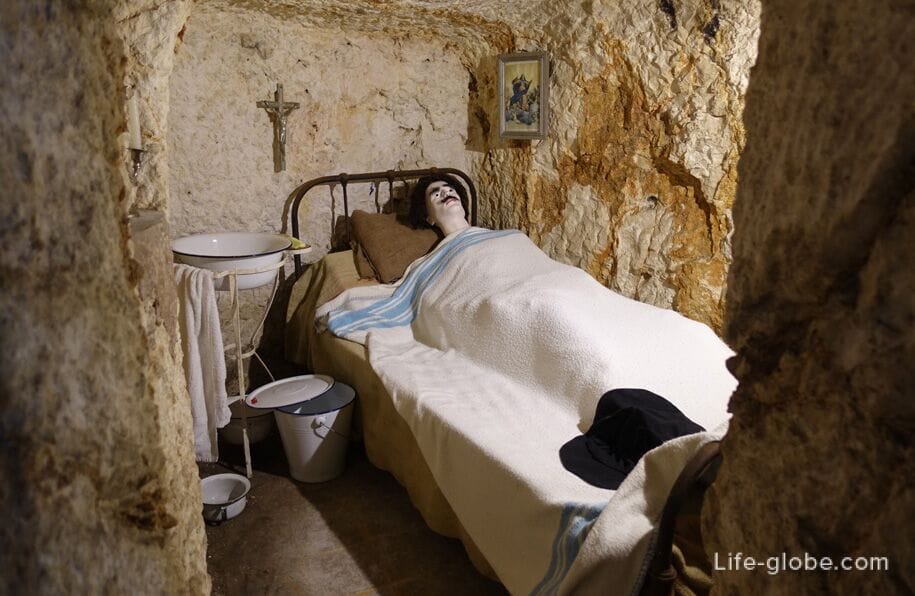
Also within the city of Mosty runs the former line of fortifications, known as Victoria Lines, originally called the Northwest Wall.
The line was built by the British military in the late 19th century as a barrier to the invading forces that landed in the north of Malta and intended to attack the port facilities.
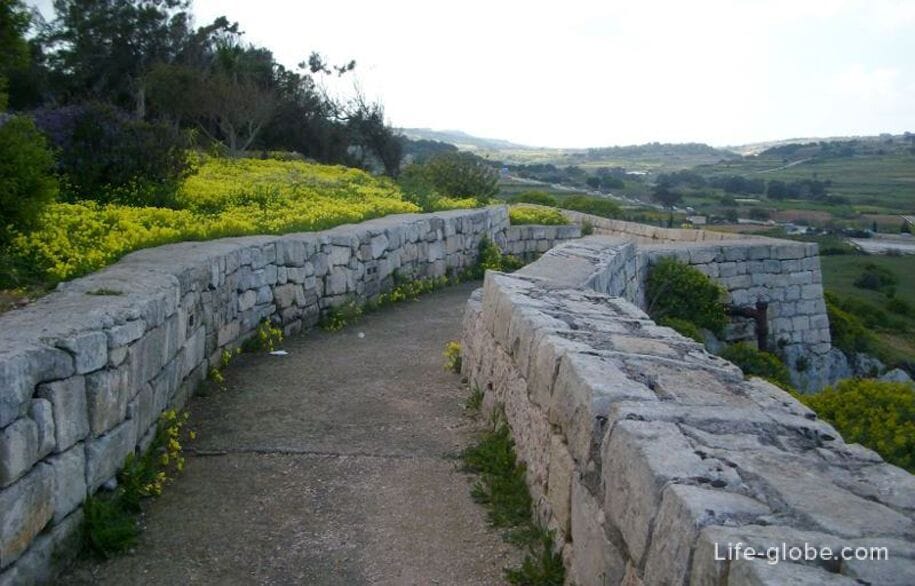
The catacombs of Ta'Bistra (Ta'bistra Catacombs), which today are the largest outside Rabat.
The catacombs were first recorded in the 1800s, but were only explored in 1933.
The catacombs work as a museum. Website: heritagemalta.
The Kumbo Tower (Torri Cumbo), which was a fortified house (villa).
The tower is a two-storey building with a niche on the main facade, surrounded by extensive gardens. There is a small Christian family tomb of the Roman era on the territory.
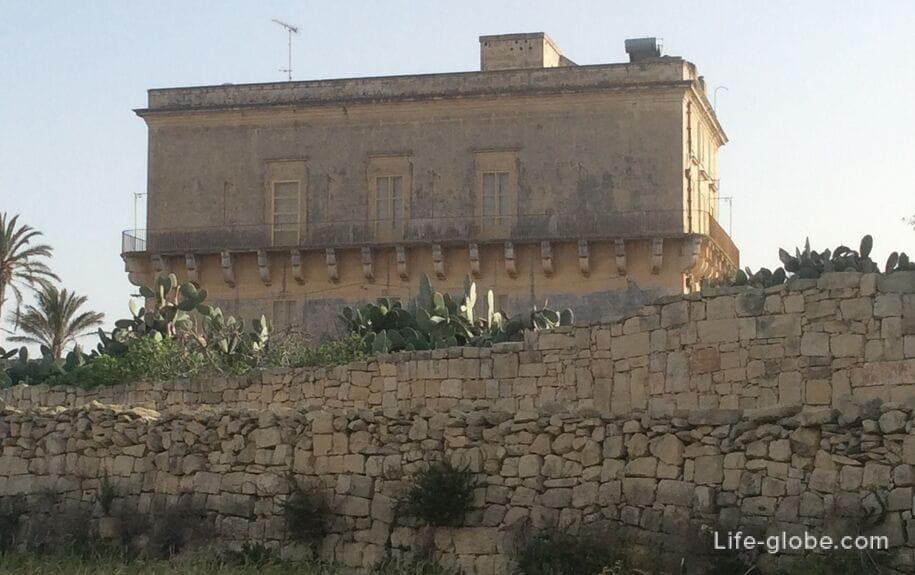
There are also several chapels in Mosta; two dolmens of the Wied Filep Dolmens dating back to the Bronze Age; and the Marquis Mallia Tabone Farmhouse, which is a folklore attraction and hosts exhibitions of paintings, photographs, crafts and a folklore museum.
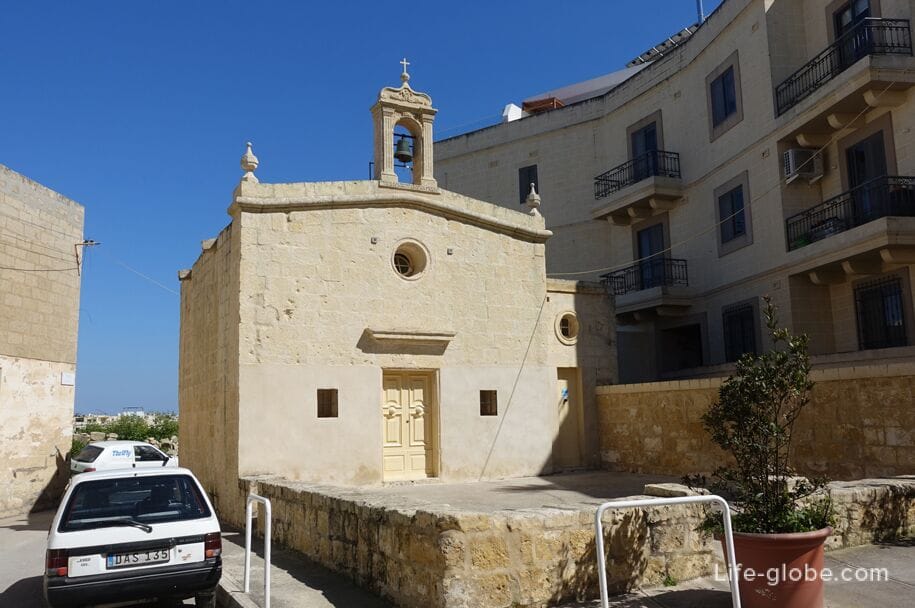


Mosta on the map
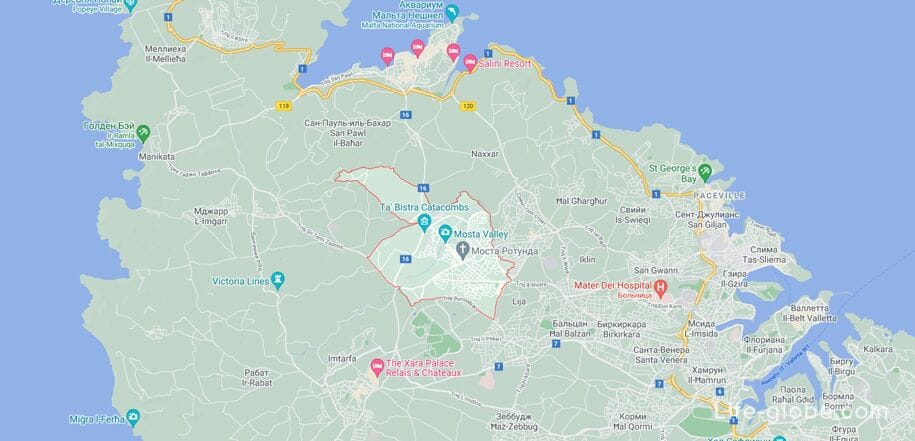
Practical information
Coordinates of the Mosta city: 35°54'00.0"N 14°26'00.0"E (35.900000, 14.433333).
You can get to Mosta by taxi, rented car or public buses around Malta, including from Valletta and Sliema. Malta public transport website: publictransport.
Also, the Mosta with the Basilica with the Bomb Museum can be visited on a sightseeing bus tour of Malta with an audio guide. All tours of Malta, including bus and sea, can be viewed and tickets can be purchased here →
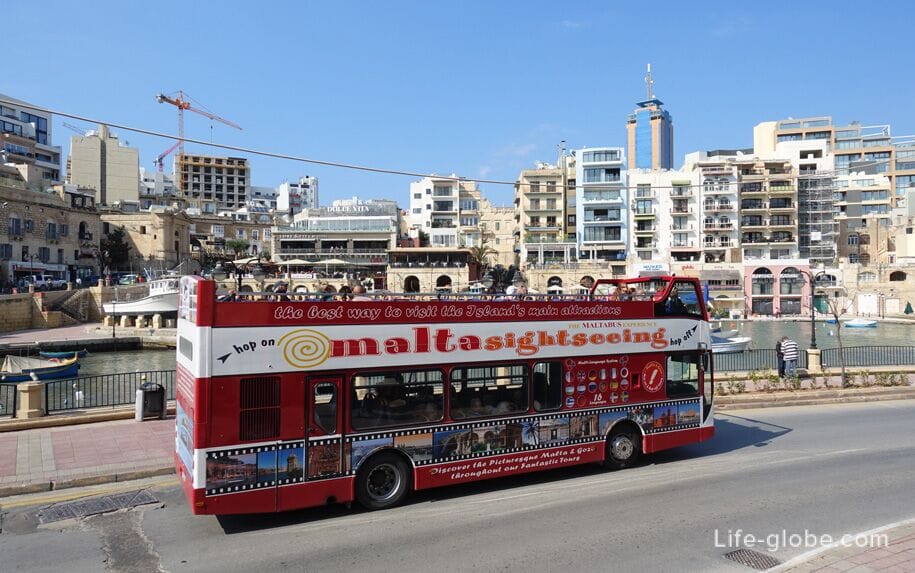
All accommodation facilities in Malta, including in Most, Sliema, Valletta, St. Julian's, Mdina, Melliehi and other places, can be viewed and booked here




